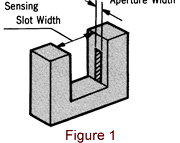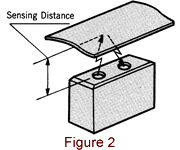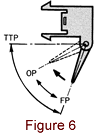Aleph Opto Sensors – Typical Applications
| Application |
Interrupter Type |
Reflective Type |
Actuator Type |
|
 |
 |
 |
| Office Automation |
Copy Machines |
Printers |
|
| FAX Machines |
Typewriters |
|
| Computer |
Printers |
Card – Tape Readers |
|
| FDD |
Laser Disks |
|
| Test Equipment |
Electric Scales |
Encoders |
|
| Speed Meters |
Time Recorders |
|
| Home Equipment |
Sewing Machines |
Video Disks |
Fan Heaters |
| Audio CDs |
VCRs |
Air Conditioning |
| Others |
Auto Vending Machines |
Medical Equipment |
Pre-payed Card Readers |
| ATM Equipment |
Amusement Games |
Factory Automation |
Description

Opto sensor consists of a light emitting element which transforms an
electrical signal to an optical signal, and a light receiving
element which transforms the optical signal to an electrical signal.
Both of these elements are housed in one package, making the opto
sensor essentially a non- contact switch. Opto sensors detect
presence, length, number, etc., of objects, using visible or infrared
light which is blocked or reflected by the object.

Interrupter type opto sensors
This is the most popular type of opto sensors. Emitting and receiving
elements are housed in one package and face each other. They sense
presence of objects in the sensing slot, without physical contact.
Selection of aperture widths : 0.5mm, 1.0mm and 1.3mm is available
to achieve the required sensing resolution. Selection of sensing
slot widths: 3mm, 5mm and 10mm is available for the required interrupter
size.
To meet as many applications as possible, we have provided many
additional features, such as: dustproof and waterproof package,
pin and insulated wire terminations, phototransistor, photo Darlington
and logic IC outputs, snap action and screw mounting options,
etc.
Reflective type opto sensors

Emitting and receiving elements are mounted on the same surface
at a fixed angle to each other. They detect presence or position
of an object through light reflection. Use of high contrast materials
(e.g. white and black) is recommended to achieve high sensing
resolution.
For use with numerous applications, we have provided these sensors with different sensing distances, package styles, sizes, mounting types, output configurations, etc.
Actuator type opto sensors

This sensor is a combination of the interrupter opto sensor with
a mechanical actuator, which physically blocks the light path
between emitting and receiving elements. Normally the actuator
blocks the beam path and opens it only when it is mechanically
actuated by the sensed object.
Most actuators travel in only one direction (Fig. 3), but we have
also designed a one that senses movement in three directions.
For use with numerous applications, we have also provided different
package and actuator styles and sizes, mounting types, output
configurations, etc.
Application Notes
Interrupter type opto sensors
- Do not use (interrupter) materials which are translucent to
visible and infrared light.
- For proper operation in dusty and/or humid environment, select
dustproof and/or waterproof sensors.
- Avoid using opto sensors in environments where high intensity
of ambient light may cause erroneous operation.
Reflective type opto sensors
- Use high contrast materials for the sensed objects.
- Choose the sensed area to be as wide as practical, to ensure
highest sensing resolution.
- For proper operation in dusty environment, select dustproof
sensors.
- Avoid using opto sensors in environments where high intensity
of ambient light may cause erroneous operation.
- Locate sensor with its active surface facing down to protect
from dust contamination or use sensors with dustproof covers.
- If soft materials (e.g. paper) are being sensed, it is recommended
that such material wipes (cleaning action) the active surface
of the sensor.
Actuator type opto sensors
Mounting
- There are two types of actuator sensors: spring loaded and
counterweight. The spring loaded actuator can be located in
any position, but the counterweight one must be positioned
as shown on the drawings.
- Actuator type sensors are designed to be mounted on sheet
metal. If mounted on printed circuit board or plastic plate,
proper attachment to such materials must be provided to avoid
mechanical shift. When more adhesion is needed, glue may be
used.
- Mounting hole size and shape vary between models; see recommended
mounting hole dimensions for each model.
- If mounting hole has a punch burred edges, insert the sensor
from the other side (see Fig. 5). Reversed insertion may cause
mechanical damage to the sensor.
 Mechanical
Mechanical
- Proper operating angle is important to achieve stable operation;
see specification sheets.
- Avoid establishing operating point (OP) very close to total
travel point (TTP) to guard against unstable operation (see
Fig. 6).
- When used for high speed sensing, make sure that the actuator
has enough time to return to free position (FP) after each
actuation.
- When
 using
spring loaded actuator type sensors, make sure that the spring
pressure on the actuator will allow proper movement of the
sensed object. Keep in mind that the actuator will wear through
repeated mechanical contact with the sensed object.
using
spring loaded actuator type sensors, make sure that the spring
pressure on the actuator will allow proper movement of the
sensed object. Keep in mind that the actuator will wear through
repeated mechanical contact with the sensed object.
Electrical
- When using models without internal current limiting resistors
in series with the input LED, adding external resistor is
necessary. Calculate the resistor’s value for the required
supply voltage range (5 through 24v).
- Models with internal current limiting resistors have specified
supply voltages; see specification sheets.
- Check maximum ratings and electrical specifications before
selecting a sensor.
- Standard supply voltage is 5V; if 12V or 24V is required
please contact ALEPH.
- If your application requirements cannot be met by any of
our standard models, due to any of the reasons listed below,
please contact ALEPH:
- high speed, or extremely low speed
- long life
- wire style (color, UL grade, gauge, length, etc.)
- connector style
- actuator style
- package style
- mounting plate thickness, etc.



 Opto sensor consists of a light emitting element which transforms an
electrical signal to an optical signal, and a light receiving
element which transforms the optical signal to an electrical signal.
Both of these elements are housed in one package, making the opto
sensor essentially a non- contact switch. Opto sensors detect
presence, length, number, etc., of objects, using visible or infrared
light which is blocked or reflected by the object.
Opto sensor consists of a light emitting element which transforms an
electrical signal to an optical signal, and a light receiving
element which transforms the optical signal to an electrical signal.
Both of these elements are housed in one package, making the opto
sensor essentially a non- contact switch. Opto sensors detect
presence, length, number, etc., of objects, using visible or infrared
light which is blocked or reflected by the object.

 Emitting and receiving elements are mounted on the same surface
at a fixed angle to each other. They detect presence or position
of an object through light reflection. Use of high contrast materials
(e.g. white and black) is recommended to achieve high sensing
resolution.
For use with numerous applications, we have provided these sensors with different sensing distances, package styles, sizes, mounting types, output configurations, etc.
Emitting and receiving elements are mounted on the same surface
at a fixed angle to each other. They detect presence or position
of an object through light reflection. Use of high contrast materials
(e.g. white and black) is recommended to achieve high sensing
resolution.
For use with numerous applications, we have provided these sensors with different sensing distances, package styles, sizes, mounting types, output configurations, etc.
 This sensor is a combination of the interrupter opto sensor with
a mechanical actuator, which physically blocks the light path
between emitting and receiving elements. Normally the actuator
blocks the beam path and opens it only when it is mechanically
actuated by the sensed object.
Most actuators travel in only one direction (Fig. 3), but we have
also designed a one that senses movement in three directions.
For use with numerous applications, we have also provided different
package and actuator styles and sizes, mounting types, output
configurations, etc.
This sensor is a combination of the interrupter opto sensor with
a mechanical actuator, which physically blocks the light path
between emitting and receiving elements. Normally the actuator
blocks the beam path and opens it only when it is mechanically
actuated by the sensed object.
Most actuators travel in only one direction (Fig. 3), but we have
also designed a one that senses movement in three directions.
For use with numerous applications, we have also provided different
package and actuator styles and sizes, mounting types, output
configurations, etc.
 Mechanical
Mechanical using
spring loaded actuator type sensors, make sure that the spring
pressure on the actuator will allow proper movement of the
sensed object. Keep in mind that the actuator will wear through
repeated mechanical contact with the sensed object.
using
spring loaded actuator type sensors, make sure that the spring
pressure on the actuator will allow proper movement of the
sensed object. Keep in mind that the actuator will wear through
repeated mechanical contact with the sensed object.